%20(3).svg)
%20(3).svg)
Companies admit that their engagement strategies are inconsistent throughout the customer engagement cycle. You can see it in their churn rates. They’re talking to customers, not with them. No connection. No stickiness.
The secret sauce? A customer engagement model that’s actually intentional, tested, and fine-tuned to pull people closer at every touch.
In this guide, you’ll discover what that means, why it works, the stages you can’t skip, and real-world examples you can steal to start turning conversations into conversions.
A customer engagement model is a structured approach that’s about how your business interacts with customers from the first click to long-term loyalty.
It’s each touchpoint between potential clients and your company: website pop-up button click, email message opening, WhatsApp chat, etc.
Surely, all these interactions are carefully programmed with the help of customer engagement software like marketing automation platforms, analytics dashboards, chatbot platforms integrated with CRM, and customer service ticketing systems.
Marketers like you use customer engagement models to plan outreach sequences, personalize onboarding, design retention flows, and measure the impact of engagement on pipeline velocity, churn, and expansion.
One of the good examples of customer engagement is a proactive chatbot on the pricing page. Its goal is to engage people to make a paid subscription or demo. After five seconds of a visitor landing on the pricing page, the chatbot sends a welcome message offering help with the plan choice. During the conversation flow, it:

The best thing — every touchpoint is logged to the CRM for attribution analysis.
This proactive model of the chatbot engagement with lead scoring can lift on-page conversion rates by up to 30%, while qualified leads see a 25% faster sales cycle.
And that’s just one of the benefits a customer engagement model brings to your business.
I’ve worked with SaaS growth teams who poured six figures into ads, content, and sales outreach… only to watch leads drift away because they didn’t have the right models in place. And I’ve seen lean, scrappy teams double ARR in a year because they locked in their customer engagement model early.
That’s not luck. That’s precision engineering.
The truth? If your business is running without a defined engagement framework, you’re leaking revenue every single day. You can’t see it on your dashboard yet — but your churn rate, missed upsell opportunities, and quiet trial drop-offs are proof it’s happening.
Here’s how the right customer engagement model changes everything:
Every interaction is deliberate. From live chat nudges on your feature page to post-onboarding emails introducing the next stages in the journey, your customer base moves forward without friction.
Engagement models ensure every department from marketing to customer success works with your audience following the same approach to increase customer satisfaction and grow lifetime loyalty. 88% of customers value the experience as much as the product itself.
Your CSMs can’t treat every account equally — not if retention is your goal. Engagement models tied to product usage, experience signals, and support ticket trends free them from “check-in fatigue.”
One rollout I led reduced customer service admin time by 12 hours per rep per week, letting them focus on success moments with high-expansion accounts.
Higher customer lifetime value comes from tracking customer engagement metrics, acting on customer feedback, and delivering proactive customer support that creates genuinely satisfied customers. A 5% bump in retention can increase profits by 25% to 95% — and engagement sequencing makes that predictable.
No more guessing where churn begins. With the right models, your customer engagement model maps the full customer journey, revealing where your business can boost retention and improve experience. A customer support dashboard adds another layer of visibility, helping teams connect engagement signals, support tickets, and product usage trends into one clear picture.
Without a defined plan, your customer engagement software is just another login your team barely touches. But with a strong model in place, customer satisfaction scores climb, customer success teams act faster at every stage, and live chat conversations turn into measurable campaigns. Your customer base gets relevant, timely touchpoints that lead to higher renewal rates and expansion revenue.
Businesses that align engagement processes with revenue targets close deals up to 67% more effectively.
Impressive? But it works only if you align your engagement ideas with the proper stage where your customers are.
I’ve run enough growth experiments to know this: winging your engagement flow means bleeding opportunity at every stage. The smartest teams don’t just “talk” to their audience — they operate with a defined customer engagement model that’s mapped, tested, and optimized like a high-converting funnel.
These five stages are the backbone. Without precision here, a business leaves both revenue and loyalty on the table — and someone else will collect them.
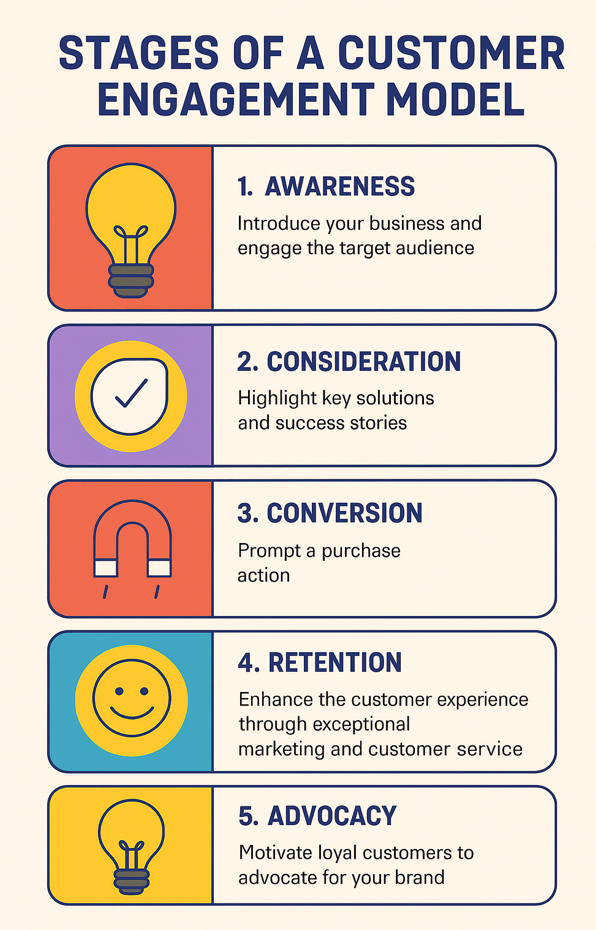
This is where people first discover your business. It might be through a product-led SEO strategy, a targeted ad campaign, or a podcast sponsorship. In the strongest models, awareness plays aren’t scattershot; they’re hyper-segmented by ICP profile, tech stack, and buying triggers.

A well-built customer engagement model at this stage leans on audience research, pixel data, and firmographic targeting to reach the right people at the right time with messaging that sticks.
These prospects know your brand and think if it's worth their time. To engage them, here use case studies, webinars, and product walkthroughs that address customer lifecycle pain points.
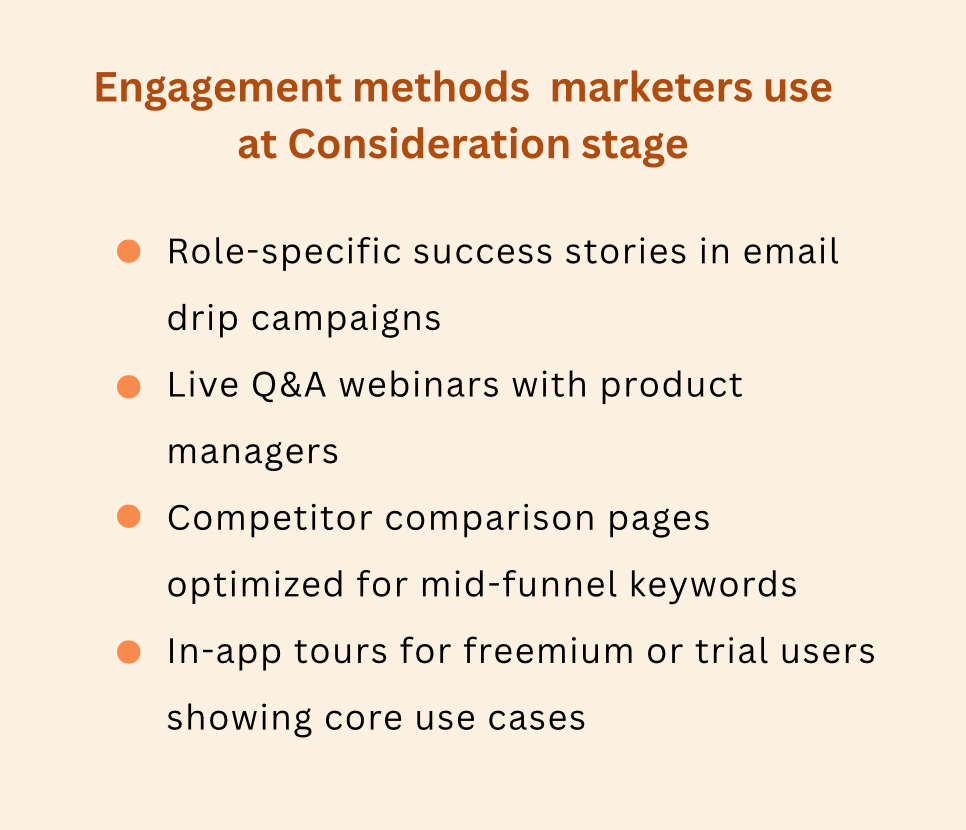
Industry-relevant success stories give your audience proof that your business can help them resolve work tasks and achieve desired goals.
At this point, every objection needs to disappear. Strong models connect product analytics, in-app nudges, and live demo scheduling directly into the customer engagement model.
For SaaS teams, behavior-based email sequences often trigger when a trial user hits a key milestone.

Within a business, RevOps ensures sales and marketing stay aligned so the handoff is frictionless and every signal is logged for attribution.
This is where your models start paying off long after the contract’s signed. Here, business focuses on health scores, usage drop-offs, and renewal risk in real time.

When a dip shows up? Boom — automated alerts kick in. Customer service jumps in before the client even logs a ticket. Marketing rolls out targeted plays to spotlight value.
And success calls? They’re not fluff anymore but QBRs that connect product wins straight to the client’s KPIs, making renewal feel more like the next logical step.
Businesses scaling quickly often rely on a virtual customer service representative to monitor support trends, respond instantly to common queries, and escalate priority issues — ensuring engagement remains high without overloading internal teams.
Here, loyal users become your loudest champions. Consistent customer service and thoughtful success check-ins reinforce their value long after purchase.

The most popular method here is to capture customers’ wins through case studies, reviews, and referrals.
Want to dive deeper? There are multiple tested combinations of the best engagement approaches grouped in “models”.
The difference between “meh” results and insane growth usually comes down to the right customer engagement model. Not just theory, but one that actually fits your business stage, audience behavior, and revenue goals.
Here, we’re diving into nine proven frameworks — each a successful customer engagement model you can steal, tweak, and roll out fast. And yes, I’ve got real examples so you can see exactly how they work in the wild.
It is a straight-line customer engagement model where each stage fires only after the one before it’s complete. No skipping steps. No jumping around. Just a guided, step-by-step path.
Why growth teams love it: it’s predictable, dead simple to measure, and perfect when your business wants to control the narrative. If your funnel is clean and your ICP behaves consistently, this is your go-to.
Execution snapshot:

The HubSpot platform runs it like clockwork. Download a guide like this 👇
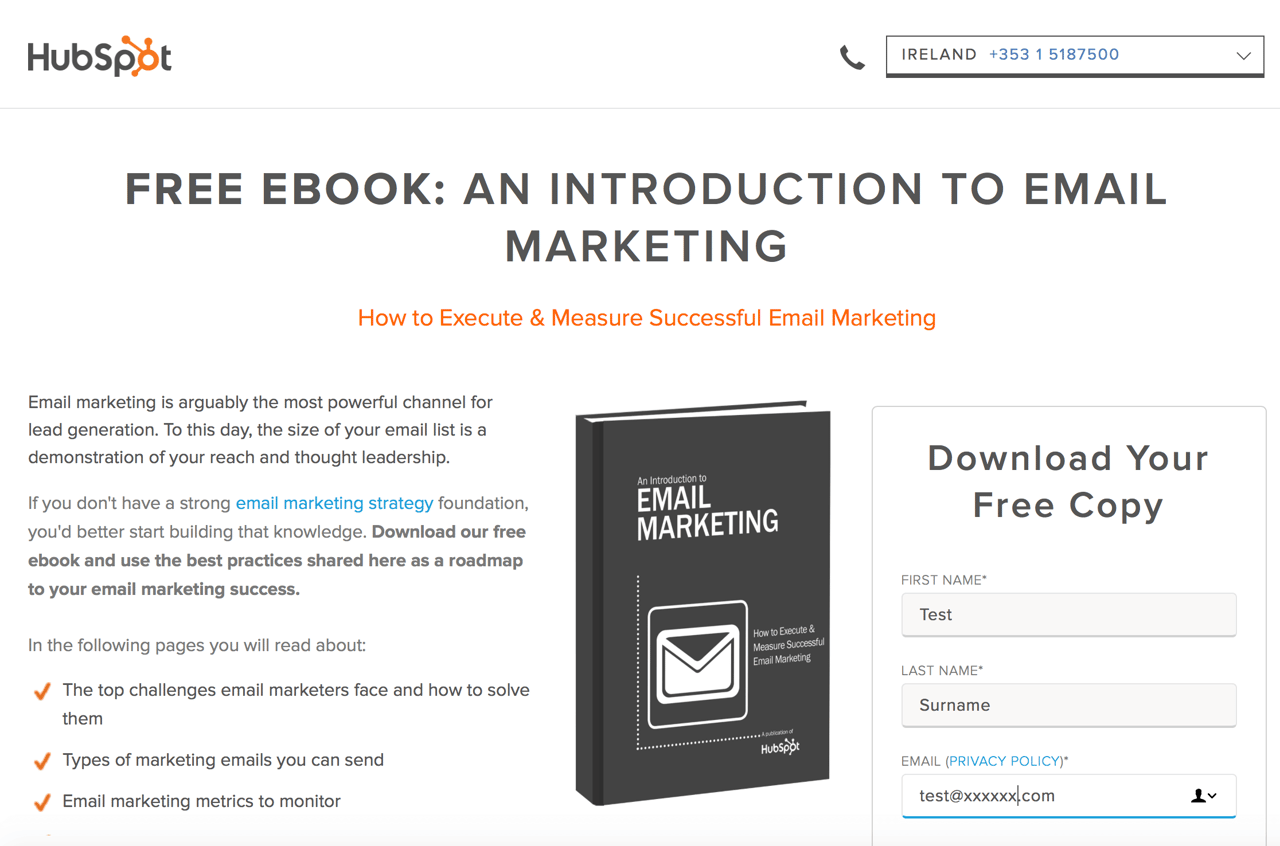
and you’re dropped into a perfectly timed email sequence:
Buy, and you get a fixed 30-day onboarding: training videos, CSM calls, milestone check-ins. Each touch builds on the last, making progress feel effortless.
In this customer engagement model, people don’t just move through your funnel once. They circle back, hit key stages again, and get re-engaged based on triggers you’ve set.
Instead of a single path to purchase and be done, you design models where the journey is continuous. Every action — a product usage milestone, a feature request, a support ticket — can loop them back into engagement flows.
Why it works:
I love how Notion implements it. After onboarding, the relationship doesn’t “end.” If you create a certain number of pages, you might get an email about advanced templates. If your team hits a storage limit, they surface a plan upgrade prompt in-app.
Haven’t logged in for 14 days? You get a reactivation email with recent product updates and a “get inspired” workspace link.

Each of these touch points loops the user back into a stage of awareness, consideration, or conversion — but for a new value proposition.
It’s all about focus. You’re not blasting the same message to everyone and hoping it sticks. You’re stacking your engagement in layers — broad, scalable touches at the base, and laser-focused, high-value moves at the top.

Models like this create a successful customer engagement system that’s scalable, profitable, and actually sustainable for your team.
Salesforce's SaaS platform is a masterclass in this.
In this customer engagement model, everything is connected. Yesterday’s email quietly cues today’s chatbot. Last month’s webinar shapes tomorrow’s retargeting. And the customer? They get what they need in real time — without telling their story for the fifth time.
The magic behind all this is the continuity of data. Business isn’t blasting messages into the void. Companies watch customer needs and behavior across channels, syncing every click and view into your CRM, and letting that intel pick the next best step.
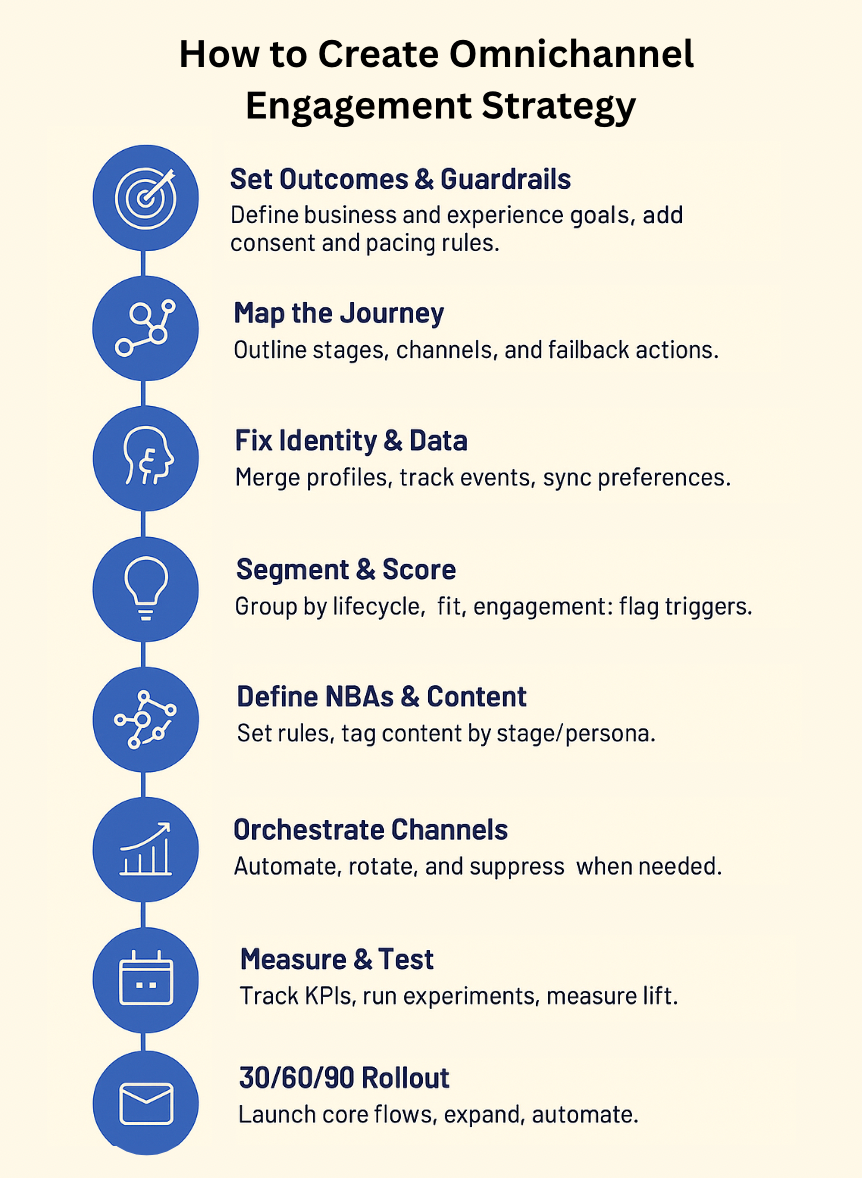
Personally, I love how Sephora nails it. You test a product in-store and it shows up in your app with a “Buy now” nudge. Leave something in your online cart and, later, there’s a friendly reminder in your inbox.
In this customer engagement model, you personalize every single touch of the conversation. Not just who business talks to, but when, where, and how. This touch model works on live signals like behavior, preferences, and the sequence of actions.
In a good touch engagement setup, every move builds on the last:
That’s how you turn the customer experience from “meh” into “wow, they get me.”
My favorite and a little creepy example of the IP personalization is from the Optimizely service.

They created 26 customized versions of their homepage — each tailored to visitors based on their IP-derived company or industry. So when a visitor lands on the site, Optimizely uses reverse-IP targeting to identify their company or industry and uses its title in their copy.
For logged-in customers, it’s even cooler: homepage modules feature their actual account manager’s photo plus a "Schedule a call" CTA.
Instead of chasing new leads, here you focus on customer retention levers: proactive support, tailored upsells, education, and community. It’s an effective customer engagement model for any business with recurring revenue or usage-based billing.
Focus on post-sale stages — onboarding, adoption, maturity — and match engagement to each: success manager check-ins, usage-based in-product nudges, or exclusive perks for loyal users.
Here is how Canva does this👇
After signing up, if you’ve been designing a presentation, Canva will surface templates for your next visit, plus tutorials to speed up your workflow.
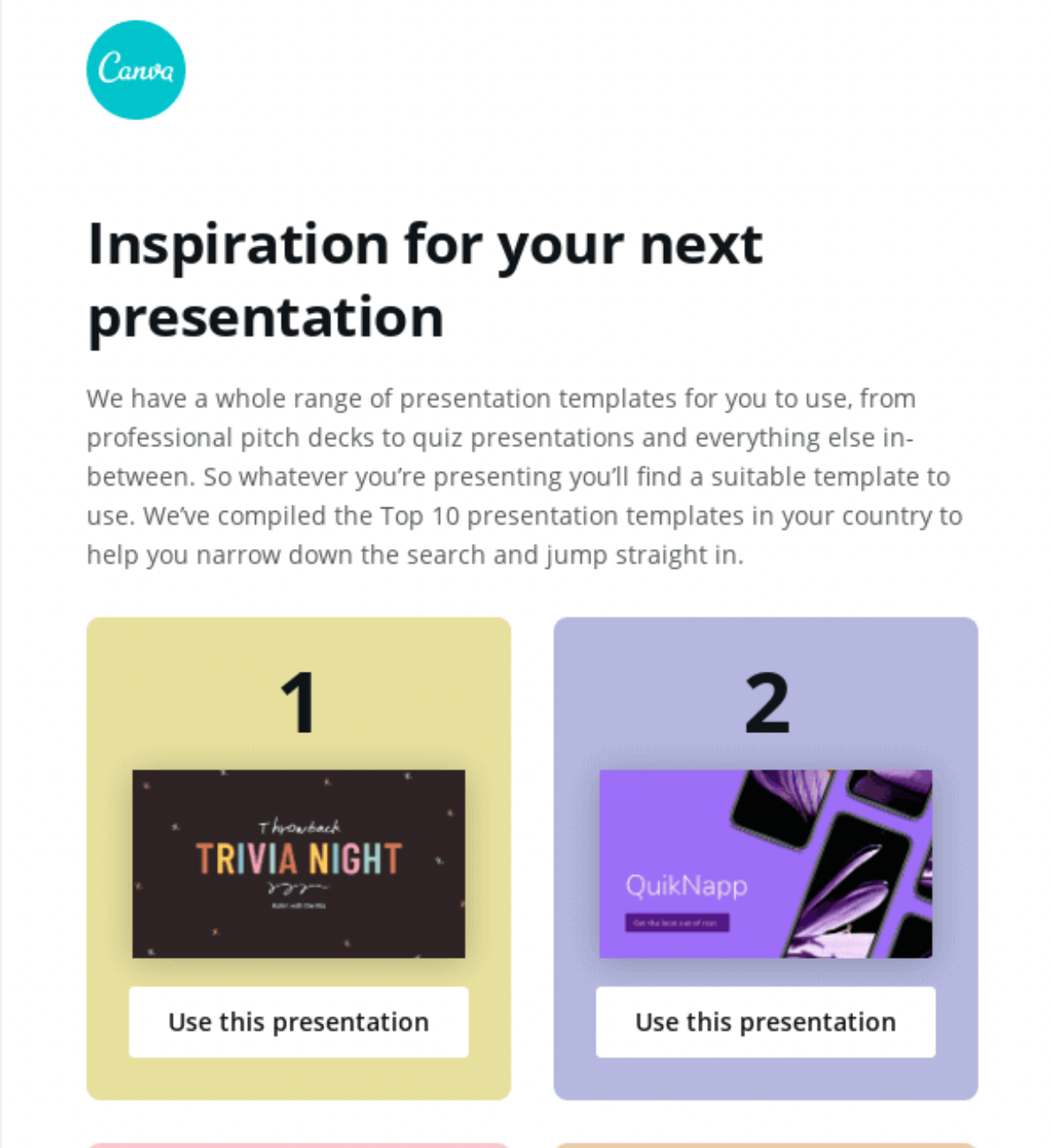
Hit certain usage milestones? You’ll get invited to advanced design challenges or early feature access.
Not every customer engagement model fits neatly into a box. Some business setups call for those less popular, more specialized models that can quietly turn into game changers.
Take the High-Touch Model. This is your white-glove touch model — dedicated account managers, personalized onboarding, frequent check-ins. It’s resource-heavy, yes.
But for enterprise clients or high-value deals? The customer experience you create here can lock in retention for years. You use it when every account is worth a deep investment and trust has to be built from day one.
Then there’s the USP Model. Engagement is built entirely around your unique selling proposition. In this touch engagement model, every interaction — across different stages — reinforces the one thing you do better than anyone else.
And sometimes… the ideal customer engagement model is a blend. A hybrid model. High-touch onboarding to set the tone. Automated education flows for scale. Then back to personal outreach for upsell or renewal.
The key? Match the model to your business priorities.
Choosing the right customer engagement model is a strategic decision. First, get clear on your goals and audience. Different types of customer engagement serve different business priorities — growth, retention, or a standout experience.
Audit where you shine. Spot where you’re leaking value.
Then map it against your funnel, your team’s bandwidth, and the models that fit your customer journey best.
Test it. Measure it. Tweak it.
The “right” model isn’t a one-time pick — it evolves as your market shifts and your customers’ needs change.
That’s how you make an engagement stick.

Irina is a Founder at ONSAAS, Growth Lead at Aura, and a SaaS marketing consultant. She helps companies to grow their revenue with SEO and inbound marketing. In her spare time, Irina entertains her cat Persie and collects airline miles.